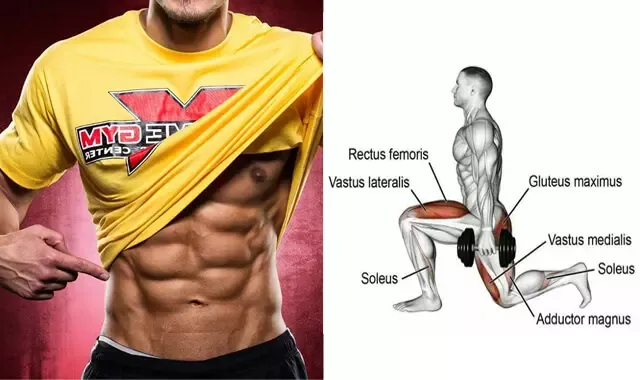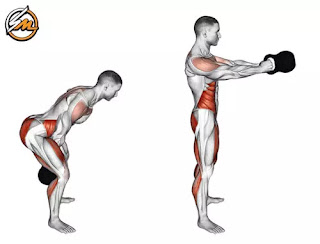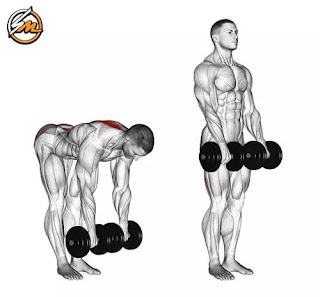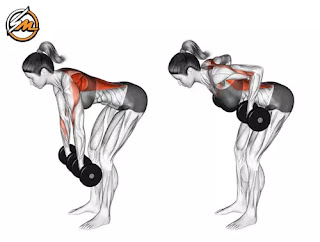We talk all the time about diet, but to lose belly fat, whether you're a man or a woman, can't you also rely on exercise?
When it comes to losing belly fat, certain fitness and muscle-building exercises are very effective. These help to tighten the abdominal belt and reduce fat stored on the abdomen for a slimmer waist and a flat stomach. It doesn't matter whether you practice them in the gym or at home.
Slimming Locally But Not Only
We know that hoping to lose belly locally is not realistic. You can't choose which places to lose fat first. Dieting and losing weight concerns the whole figure. This does not mean that there is nothing you can do to tighten your tummy and have a flatter tummy.
A combination of cardio sport targeted exercises and diet will allow you to lose belly and thighs. However, it will give visible results, including on the abdominal belt.
Sport to Burn Calories
Most of the so-called cardio sports help burn calories. Sport, in addition to raising body temperature and strengthening the heart, tones the whole body. Strength training of the bodybuilding type is also effective because we continue to burn calories even after exertion. And the higher our muscle mass, the more calories we burn even at rest.
Classic weight training, which includes crunch-type abs designed to bring the insertion points closer together and contract the muscles, increases the volume of the abs, especially if you use heavy machines. Better to lose belly, favor sheathing, or short and quick exercises.
When you do core sheathing, don't just plank. To work all your abdominals, you have to alternate ventral sheathing, side sheathing, and even back sheathing. The latter is often forgotten.
To decrease the waistline and reduce the prominent effect on the stomach, these core exercises are very important, but not only.
Better breathe for better sheathing
We often forget that the deep muscles are responsible for our posture and allow us to have a flat stomach. This exercise does not require any athletic technique. It consists, lying on the back, knees bent, to suck the belly towards the spine by using breathing. People who regularly practice yoga or pilates know it well. But it is, wrongly, neglected by athletes believing they are doing well by over-soliciting the right and obliques.
This exercise helps to slim the waist and massage the internal organs without risk of injury. You should feel the contraction just as you breathe out with your back on the floor and tuck in your stomach. It is a simple exercise, yet most people cannot breathe this way.
Can you lose both stomach and thighs?
There are simple strength training exercises to lose stomach-thigh-hips at the same time. They do not target the belly but make the sheathing work like no one else. Unlike movements focused on the abdominal area, these movements involve the lower body but also the core of your body, which are the abdominals. The difficulty, since you don't feel a burn, is knowing that your abs are working too. However, you must constantly tighten your stomach to stabilize your posture and keep your balance. And without realizing it you are working your abdominals.
This is the case with the plank, jump exercises, or polyarticular exercises such as squats or deadlifts. We have reviewed the best exercises for losing belly fat for you.
6 Best Exercises to Reduce Belly Fat
Lunges
Lunges are exercises for losing hips and thighs easily. What is less well known is that they also help with stomach loss. They strengthen the quads, glutes, hamstrings, and calves. But when you use so many muscles at once, your body needs stability, and your abdominals are in charge.
Starting position: stand up, take a big step forward. Bend your leg until your front thigh is parallel to the floor and your back knee is closer to the floor. Keep your back straight and tighten your stomach. Return to the starting position and switch legs.
Squats
Likewise, the abdominals are called upon to do squats, especially if you contract your stomach well during the push-up.
Starting Position: Standing with feet shoulder-width apart, bend your knees, and push your buttocks back until your thighs are parallel to the floor, keeping your weight on your heels. Squeeze your butt and abs as you come back up. Holding a bar or kettlebell at your neck with the weight facing forward, the core should be even tighter to protect your back. The abdominals are as engaged as the glutes.
Kettlebell Swing
This movement is technical but we feel that it engages the entire pelvis and the center of the body with this swing. The power of the movement is given by the hips and abs. Fast, short, and explosive, that's exactly what it takes.
Starting Position: Standing with feet shoulder-width apart, hold the kettlebell with both hands. Bend your knees slightly, then swing your hips back to accompany the kettlebell swing, arms straight. Straighten up with your back straight, using the momentum of your hips to bring the weight up to eye level.
Overhead Walking Lunge
All the muscles of the legs, shoulders, upper back, and abdominals are used. You have to contract constantly to maintain good posture, especially with dumbbells.
Starting position: stand up, hold the ball (or dumbbells) with your arms bent at shoulder level, take a big step forward as in the lunges, and at the same time raise your arms vertically above your head. Bring your arms back to your shoulders as you straighten up. Switch legs and walk across the room.
Deadlift
We don't always know it, but the deadlift is a great abdominal exercise. If you don't get them enough, your back will hurt.
Starting Position: Standing with feet hip-width apart, knees slightly bent, a dumbbell or kettlebell resting on the floor between your feet. Bend your knees, grab the weight with both hands and come up with your back flat, torso parallel to the ground, pushing up on your buttocks and heels. The weight stays against your shins as you straighten up. Lower the weight back to the floor and repeat.
Bent-Over Dumbbell Row
This position, leaning forward, forces the core of the body to contract to keep the back flat and the body stable.
Starting position: Standing with feet shoulder-width apart, a dumbbell in each hand. Bend your knees slightly and lean forward. Bring the weights back to chest level, without moving your back, elbows apart and shoulder blades tight. Let the weights go down while controlling the movement. As you progress, do your arms one after the other, the core is even stronger.













0 Comments